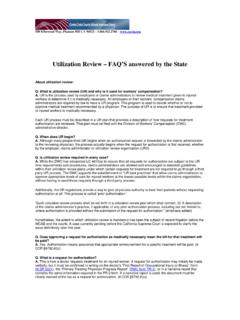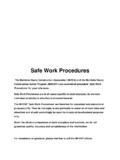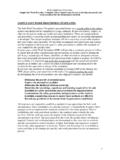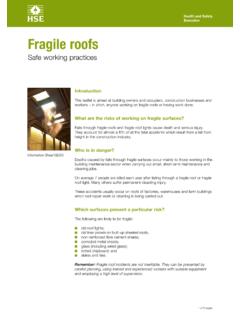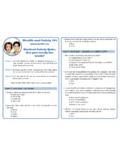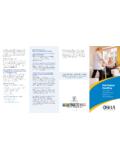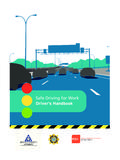Transcription of SAFE WORK PRACTICES for CUSTODIANS - CCCSIG
1 Contra Costa County Schools Insurance Group Workers Compensation/Health & Safety Services & Health Benefits Program Provider CCONTRAONTRA CCOSTAOSTA CCOUNTYOUNTY SSCHOOLSCHOOLS IINSURANCENSURANCE GGROUPROUP 550 Ellinwood Way, Pleasant Hill, CA 94523 ~ ~ Phone: 1 (866) 922-2744 Fax: (925) 692-1137 SAFETY AT THE CENTER OF IT ALL As CUSTODIANS , you keep schools safe and clean for students and staff. When you take care of your own health and safety at work , you avoid disruptions in your life and at work , and can continue providing an important service to students. Did You Know? Carrying and lifting and slips, trips and falls are the leading causes of injuries among CUSTODIANS . Exposure to hazardous cleaning chemicals can cause eye irritation, skin rashes, coughing, dizziness, and more serious illnesses.
2 Many of these illnesses are never reported. Keep yourself safe and healthy on the job by following the tips in this flyer on how to identify and avoid potential hazards. ERGONOMIC Warm up and conduct stretching exercises before doing any lifting. When lifting, keep loads close to your body; bend at the knees and lift with your legs; keep your back straight; and do not twist. Push, don t pull, custodial cart, hand truck, etc. Do not twist or over-reach while mopping or lifting. Use caution when approaching corners and doorways with cart. Check weight of trash can prior to lifting; get help if necessary. Break heavy loads down into smaller, lighter units whenever possible. Use proper body mechanics when emptying trash into dumpsters; do not twist. Use a dolly or rolling cart to move heavy objects. Drill holes into the bottom of garbage barrels.
3 This makes it easier to lift garbage bags out of the barrel. For tasks that require repetitive motions (such as mopping), alternate between the left and right hands. For backpack vacuums, check proper fit, including use of the support harness. Empty the vacuum bag often to lighten the vacuum. Built-in Bleachers: Always have at least two people pull out or put back rolling bleachers. Recommend use of powered mule to assist in pulling out or putting back rolling bleachers. SLIPS, TRIPS & FALLS When cleaning floors, clean only a small area at a time. Keep area isolated by barriers. Cover oil/grease spills with an oil-absorbing compound and clean up at once. Clean up spills immediately. Use warning signs to keep people away from wet floors. Use caution when stripping and waxing floors.
4 Some chemicals make floors slippery. Always use a ladder/footstool to reach for objects. Never stand on a box or cart. When using a ladder, put the ladder on a stable, dry surface. Make sure it is fully open and locked. Do not stand on the top two rungs of the ladder. Make sure shelves and storage racks are stable and secured. Wear hard toed boots/shoes with non-skid soles. STRUCK BY FALLING OBJECTS/CAUGHT IN OR BETWEEN Built-in Lunch Tables: Make sure that both pins are engaged into wall channels before raising into position on tables so equipped. Make sure spacers at the top are in the proper position before raising tables. Report any broken or worn parts immediately to supervisor. Always use a latch puller to release lower latches on tables so equipped. If tables are equipped with security latches, make sure they are engaged when tables are in their raised positions.
5 Do not turn your back on tables or benches which have had security latches released. Unlatch one table or bench at a time. When lifting, keep load close to body, bend knees, lift with legs & keep your back straight safe work PRACTICES for CUSTODIANSSAFE work PRACTICES for CUSTODIANS safe work PRACTICES for CUSTODIANSSAFE work PRACTICES for CUSTODIANS CCONTRAONTRA CCOSTAOSTA CCOUNTYOUNTY SSCHOOLSCHOOLS IINSURANCENSURANCE GGROUPROUP 550 Ellinwood Way, Pleasant Hill, CA 94523 ~ ~ Phone: 1 (866) 922-2744 Fax: (925) 692-1137 CHEMICALS Dilute chemicals (such as disinfectant) according to the manufacturer s directions. Open windows and doors, if possible, when using chemicals. Make sure all chemicals you use are labeled and that you have a Safety Data Sheet (SDS) for each product. Do not mix chemicals unless instructed to by the manufacturer.
6 Never mix bleach and ammonia. Close all containers, especially spray bottles, when not in use. Keep floors clean to reduce the need for floor strippers. Use floor mats at all entry ways to catch dirt. Bring clean clothes and shoes to change into at the end of the work shift so you do not bring any chemicals home. Wash your work clothes separately from other clothes. ELECTRICAL HAZARDS Keep electrical equipment away from water. Dry your hands before touching electrical equipment. Make sure equipment is in the Power off position before plugging it into an outlet. Disconnect an electrical plug by pulling on the plug, not the cord. Report any damaged equipment, such as frayed electrical cords. Immediately turn off the power if you smell burning plastic or smoke, see sparks, or feel tingling or a shock.
7 Do not use the equipment. Report the problem immediately. Follow steps for proper lock out/tag out when servicing equipment. Turn off and disconnect the equipment. Make sure the source of power has a lock or a tag. Three Easy Steps (5-10 min. total!) WARMING YOUR BODY This involves gradually increasing your heart rate, body temperature and breathing rate. The main purposes of warming up are to raise both the general body and deep muscle temperatures and to stretch connective tissues to permit greater flexibility. This reduces the possibility of muscle tears and ligament sprains. STRETCHING YOUR MUSCLES Stretching permits a greater range of movement within the joint, the ligaments and other connective tissue are not so easily strained or torn. It also permits greater freedom of movement in all directions.
8 DEVELOPING YOUR CORE The core is the torso, extending from the shoulders to the pelvis. It is the body s center of power. Training the muscles of the core will help correct postural imbalances, prevent injuries and develop efficient, functional movement patterns. INJURY PREVENTION THROUGH PHYSICAL CONDITIONINGINJURY PREVENTION THROUGH PHYSICAL CONDITIONING CUTS, ABRASIONS, BURNS & OTHER BODILY INJURIES Do not operate any equipment or machinery without proper training Knives and other sharp instruments/tools should be sheathed when carried. Do not use broken tools. Use leather gloves when cleaning broken glass. Do not wear jewelry, or loose or baggy clothing that might catch/snag on objects. Remove protruding staples, nails, straps or wire before handling loads. Watch position of hands when carrying loads through doorways or past fixed objects.
9 Do not dig out waste by hand. Watch for jagged/torn metal trash cans. Wear eye protection when changing fluorescent tubes or incandescent lamps. Identify hazards to the eyes and face (chemicals, dust, heat, impact and optical radiation). INFECTIOUS DISEASES Wash your hands frequently. If you may come into contact with blood or other bodily fluids: Wear disposable gloves Wash your hands with soap and water Disinfect any equipment or work areas that are affected
